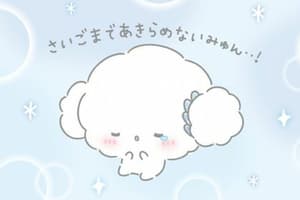Podcast
Questions and Answers
What is the scientific name of the earthworm?
What is the scientific name of the earthworm?
- Annelida
- Helminthes
- Oligochaeta
- Lumbricus terrestris (correct)
What is one characteristic of an earthworm's body structure?
What is one characteristic of an earthworm's body structure?
Segmented body
What type of circulatory system do earthworms have?
What type of circulatory system do earthworms have?
- Semi-closed system
- Closed system (correct)
- Open system
- No circulatory system
What is the function of the earthworm's gizzard?
What is the function of the earthworm's gizzard?
What does the term 'hermaphrodite' mean in the context of earthworms?
What does the term 'hermaphrodite' mean in the context of earthworms?
What is the function of setae in earthworms?
What is the function of setae in earthworms?
What structure is responsible for temporary storage of food in earthworms?
What structure is responsible for temporary storage of food in earthworms?
What is the purpose of the clitellum in earthworms?
What is the purpose of the clitellum in earthworms?
What is a nephridia?
What is a nephridia?
Which part of the earthworm's digestive system is responsible for nutrient absorption?
Which part of the earthworm's digestive system is responsible for nutrient absorption?
Earthworms have eyes.
Earthworms have eyes.
What is the inner folding of the intestine in earthworms called?
What is the inner folding of the intestine in earthworms called?
Flashcards are hidden until you start studying
Study Notes
Earthworm Classification
- Belongs to phylum Annelida, meaning "little rings."
- Classified under class Oligochaeta, denoting "few bristles."
- Scientific name is Lumbricus terrestris.
Earthworm Characteristics
- Body is segmented, showcasing a coelom.
- Exhibits a "tube within a tube" structure (outer skin and digestive system).
- Displays cephalization and bilateral symmetry.
Circulatory System
- Features a closed circulatory system where blood remains in vessels.
- Blood flows from anterior to posterior via the ventral blood vessel.
- Movement from posterior to anterior is aided by dorsal blood vessel constriction and aortic arch pumping.
Nervous System
- Contains ganglia and a brain located at the anterior end.
- The brain comprises fused ganglia responsible for processing sensory information.
- Connected to the cerebral ganglia is a ventral nerve cord extending to the anus, without visual organs.
Reproductive System
- Earthworms are hermaphroditic, allowing for slow sperm exchange.
- Two worms align alongside each other to exchange sperm through mucus.
- Clutches of eggs are fertilized and they have the capacity to regenerate.
Movement
- Relies on contraction and expansion of the coelomic fluid.
- Uses setae to anchor into the soil for movement.
Internal vs. External Segmentation
- Internal segmentation correlates with external segmentation; both are the same.
Aortic Arches
- Connect the dorsal vessel with the ventral vessel, integral in the circulatory system.
Hermaphrodite
- Possesses both male and female reproductive systems.
- This trait is beneficial for slow-moving worms, allowing for efficient reproduction.
Tube Within a Tube Structure
- Outer skin functions as the external tube, with the digestive system as the inner tube.
- The coelomic cavity separates these two structures.
Setae
- Small bristle-like structures that secure the worm to the soil, preventing motion.
Seminal Vesicles
- Organs that are responsible for producing sperm.
Seminal Receptacles
- Organs that receive sperm from another worm during the reproductive process.
Prostomium
- The upper lip utilized for burrowing and for bringing soil into the mouth.
Crop
- Functions as a storage area for temporary food holding.
Gizzard
- Muscular organ that grinds soil into a smooth paste for easier digestion.
Intestine
- Responsible for the digestion and absorption of nutrients and water.
Typhlosole
- Inner folding of the intestine that increases surface area for enhanced absorption of nutrients and water.
Clitellum
- A thickened, glandular section of the worm’s body that secretes mucus to bind worms together during mating.
Egg Fertilization
- Post-sperm exchange, worms separate, and the clitellum secretes a tube for collecting eggs and sperm.
- Fertilization occurs inside this mucus tube.
Nephridia
- Tubular structures that facilitate the elimination of cellular wastes and excess water.
Digestion Process
- Follows a sequence: pharynx → mouth → esophagus → crop → gizzard → intestine (with typhlosole) → anus.
Studying That Suits You
Use AI to generate personalized quizzes and flashcards to suit your learning preferences.





